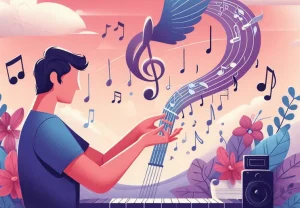Costa Blanca Arts Update – Trio Mariozzi-Mariozzi-Rucli and Duo Palomares-Espi

Live music in December 2020 is probably not the commonest of commodities wherever you live. In our corner of south-east Spain, we have some. In normal times, whatever that phrase might now mean, there would be at least the opportunity of attending two or three concerts a week in this area, but our new normal here has for several months changed the situation. Whether it is this new scarcity, this new normal, or indeed whether it is simply the quality of what we hear, I have no idea, but I can record without hesitation that everything now sounds more vivid, more committed and more beautiful. And so it was for the two chamber music events presented by Alfas del Pi’s Classical Music Society this weekend.
On Saturday 12 December in Casa Cultura, the society hosted a piano trio with what looked like at first glance a fairly standard program. The trio comprised the clarinet of Vicenzo Mariozzi, the cello of Francisco Mariozzi and the piano of Andrea Rucli. This was in fact the fourth concert of the trio’s mini tour with the same program and, if the other three venues had provided rehearsal time, then this fourth concert’s perfection might just have another explanation apart from the obvious and sustained virtuosity of the musicians.
We began with the Brahms trio opus114. Its gentle, almost flickering lines assemble to present a mind in turmoil. The phrases may be short, sometimes very short, but the statements are long and sometimes convoluted. But eventually this is direct music, despite its almost constant asides, whose surface a listener can enjoy at an aural glance. But there is much more here only just below the gloss. There is the aftermath of depression, an obvious, but, one feels, an unfulfilled desire to reflect on a past that has some powerful memories. There is nostalgia alongside fear of the future and the unknown. The music seems to reek of regret. Its style and hand are both utterly assured, but the composer is suffering new personal doubt, so we are presented with a contradictory and compelling mix of late Brahms, personal doubt expressed via assured technique, intangible feelings precisely described. It was a picture that Vicenzo Mariozzi, Francisco Mariozzi and Andrea Rucli conveyed via a remarkable skill of understatement.
In retrospect the next two works on the program formed a similar pair, an unexpectedly similar pair in that they seem to share an unusual conceptual framework. Beethoven was a young man when he wrote his opus 11 trio, the Gassenhauer. He wanted to show off. He wanted to make his mark on the city’s life, future earnings being the goal. He thus wrote a serious trio that showed off his melodic, conceptual and compositional gift. But crucially he adopted a contemporary earworm for the main theme of the finale. It was a tune that everyone was whistling around the town. In Beethoven’s hands, it became a set of variations where the main variable is rhythm. This trivial little idea then becomes something grand, even grandiose at times, despite its humble origins. It was rather what Beethoven himself wanted to do in his own life.
The final piece in this program was the trio by Nino Rota. The work’s first two movements are both highly melodic and very rhythmic, but the musical language is couched in a style that can only be described as astringent neoclassicism. This may not be Hindemith, nor Stravinsky, but it is music with a hard, sometimes spiky surface. The finale, however, is like a scoop of ice cream on a crumbly biscuit, an almost hackneyed ditty that sits somewhere between Charlie Chaplin and the Keystone Cops. It’s a moment that reminds us not to take anything too seriously, except, perhaps, a sideways surreal and thus revealing view of life. Beethoven chose a silly ditty to self-aggrandise, whereas Rota seems to make fun of the whole process until, however, one realizes how beautifully written and constructed is the entire work. And the fact that this commentary deals almost exclusively with the impressions delivered by the pieces is testimony to the perfection that Vicenzo Mariozzi, Francisco Mariozzi and Andrea Rucli brought to the playing.
And then, on Sunday lunchtime Alfas del Pi Music Society presented a violin and guitar duo in Albir. It’s a combination and a concert we have heard before and hopefully we will hear again. The society’s vice-president, virtuoso violinist Joaquín Palomares renewed his performing partnership with guitarist Fernando Espí in a program they titled Música Iboamericana. In theory, these might be viewed as lighter pieces, an assemblage to pass a pleasant hour on a clear and sunny December day by the sea.
But the understanding between these two virtuoso musicians renders everything they play not only elegant but also exciting and ultimately moving. The program was the Serenata by Malats, the Brazilian Dances of Machado, a Milonga by Tavolaro, Amasia by Boutros, three of Manuel de Falla’s Popular Songs and two movements from The Story of the Tango by Piazzolla. The music went from bossa nova to tango, from Europe to South America, from folk music to dancehall, a journey which, when contrasted with the trio of the previous evening, really did illustrate how far music can transport an audience and the different places it can take us.






